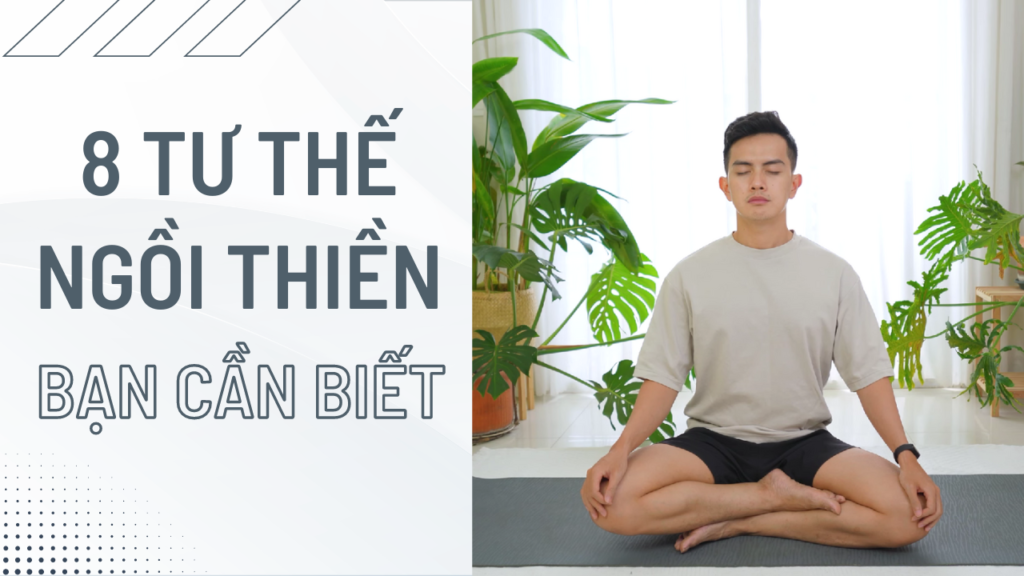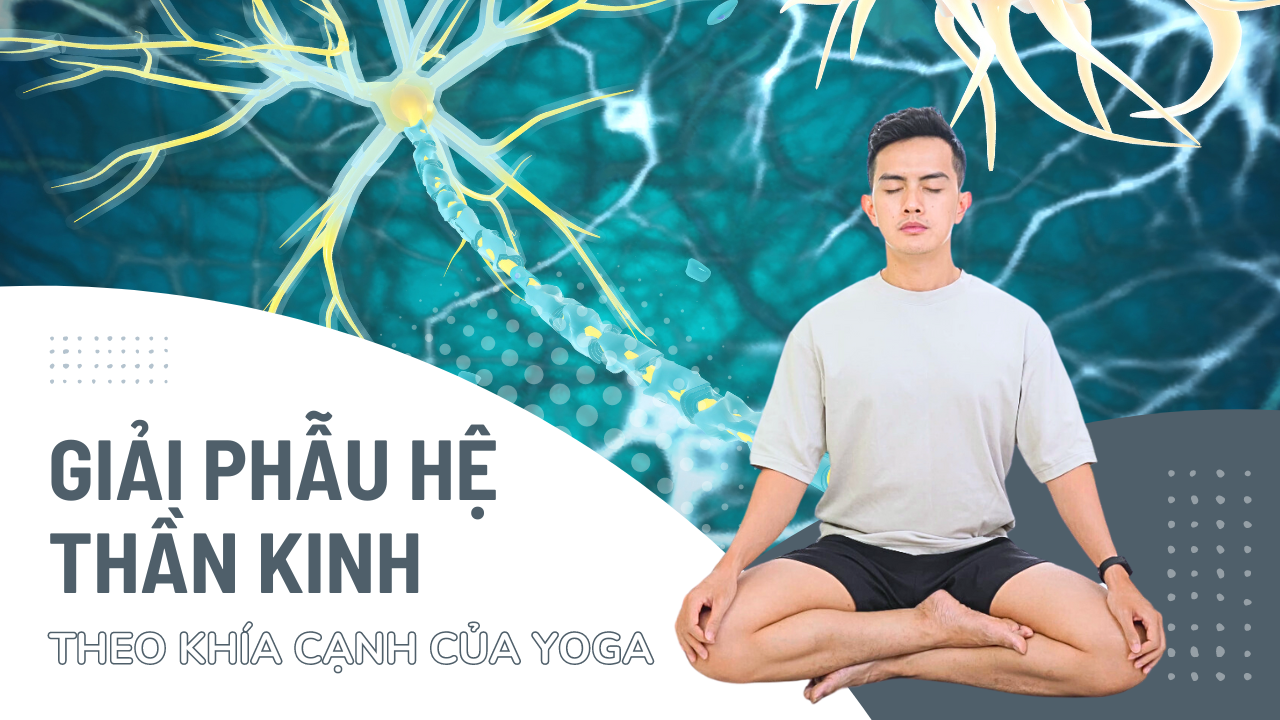Meditation has become popular in the journey to find peace, good for health and soul. However, many new people still have difficulty getting started with meditation.
One of the most important factors for success in meditation is proper sitting posture. Therefore, this article will introduce you to the 8 best meditation postures, suitable for everyone. Please read and discover with Nguyen what these postures are!
Why is sitting posture in meditation important?
Why is sitting posture in meditation important? The reason is because the body and soul have a special relationship in meditation. You need to sit in the right posture whether you are seeking enlightenment or just want to improve your mental state to get the most out of it.
First of all, when you sit in the correct posture, you can more easily maintain focus on your breathing or the object of meditation more effectively, helping to calm and clear your mind of disturbing thoughts.
Second, sitting posture in meditation helps improve body flexibility and creates good conditions for blood circulation. This can reduce muscle tension, back pain and provide comfort for longer meditations.
Finally, the sitting posture in meditation is often seen as a symbol of stillness and awareness. It creates an atmosphere of calm and smooth stillness, which helps create good conditions for penetrating the soul and discovering one's true nature.
It is important that the Buddha emphasized that no meditation position is better than another, so there is no best position. With meditation, the most important thing is to adapt to your body and find the best posture for yourself. This ensures that you have a true meditation experience and have the opportunity to discover yourself through the process.
Important elements in Zen posture
No matter what meditation position you choose, there are certain elements that you should focus on. The goal is to find a comfortable position where you can achieve a balance between stillness and alertness. Here are the “important points” you need to know in the Zen sitting position:
- Lumbar spine
Make sure your lower back is not tilted or arched. You want your spine to be straight, but you also need to maintain a slight curve in your lower back, which is a natural part of healthy back posture called “lordotic curvature.” By maintaining this balance, you can avoid back pain. You can imagine a string from the top of your head gently pulling you up to help maintain a straight spine.
- Shoulder
Let your shoulders relax and relax back, chest open, this relaxes the body and makes breathing easier.
- Chin
Gently press your chin a little inwards and you will feel your cervical spine lengthen.
- Hand
A traditional and popular hand placement that everyone knows is “mudras”, however how you place your hands is up to you, any position that allows you to maintain balance without Feeling your body tilted forward or backward is fine.
The simplest way is to rest your hands on your knees or place your left hand on top of your right hand, palm facing up on your thigh, which is what most people who practice Yoga and Meditation do.
8 best meditation postures
Quarter Lotus – Quarter Lotus
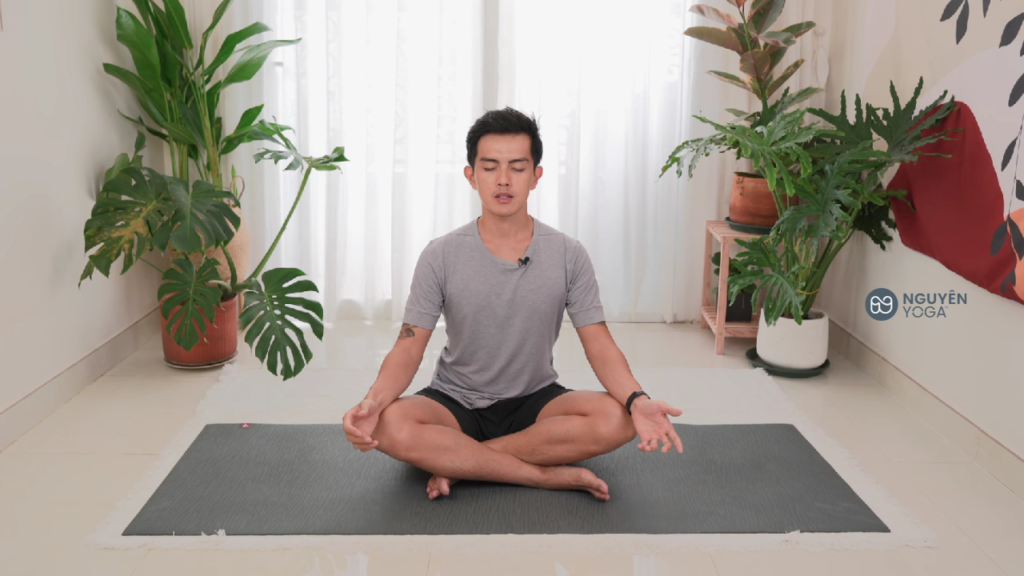
The Quarter Lotus Zen sitting position is similar to the way you would sit when an elementary school teacher asked you to sit "cross-legged." In this position, each leg lies below the knee of the other leg. This is a typical diagonal sitting position.
Using a Zen pillow in this pose will help lift the hips and keep the lower back from arching. Your knees will gently touch your legs, but can be adjusted to suit your comfort.
Bonus tip: You can always use a wall for support behind you. If you do so, try placing a rolled sweater between your lower back and the wall to help position your spine properly.
Half Lotus Pose – Half Lotus Pose
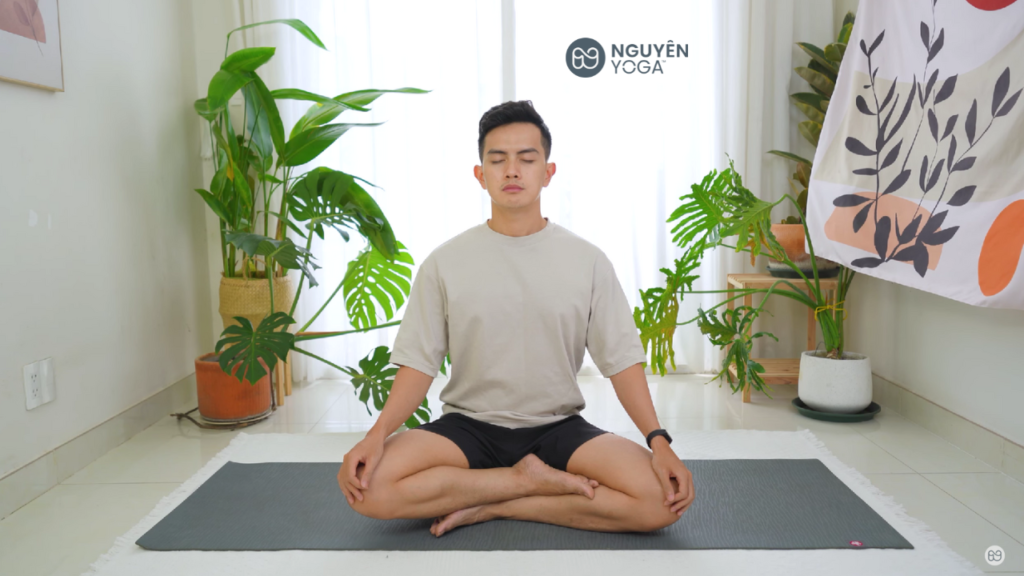
Half Lotus Pose is similar to the Quarter Lotus pose, except that the left or right leg is placed on the thigh of the other leg. The Half Lotus Pose requires hip flexibility to avoid putting pressure on the knee joints.
Note: If you are new to doing this pose or have knee pain, you can try it Pigeon Yoga Pose (Pigeon Pose) or “reverse pigeon” in Yoga to warm up the body before performing the Lotus Pose.
The Full Lotus – Lotus
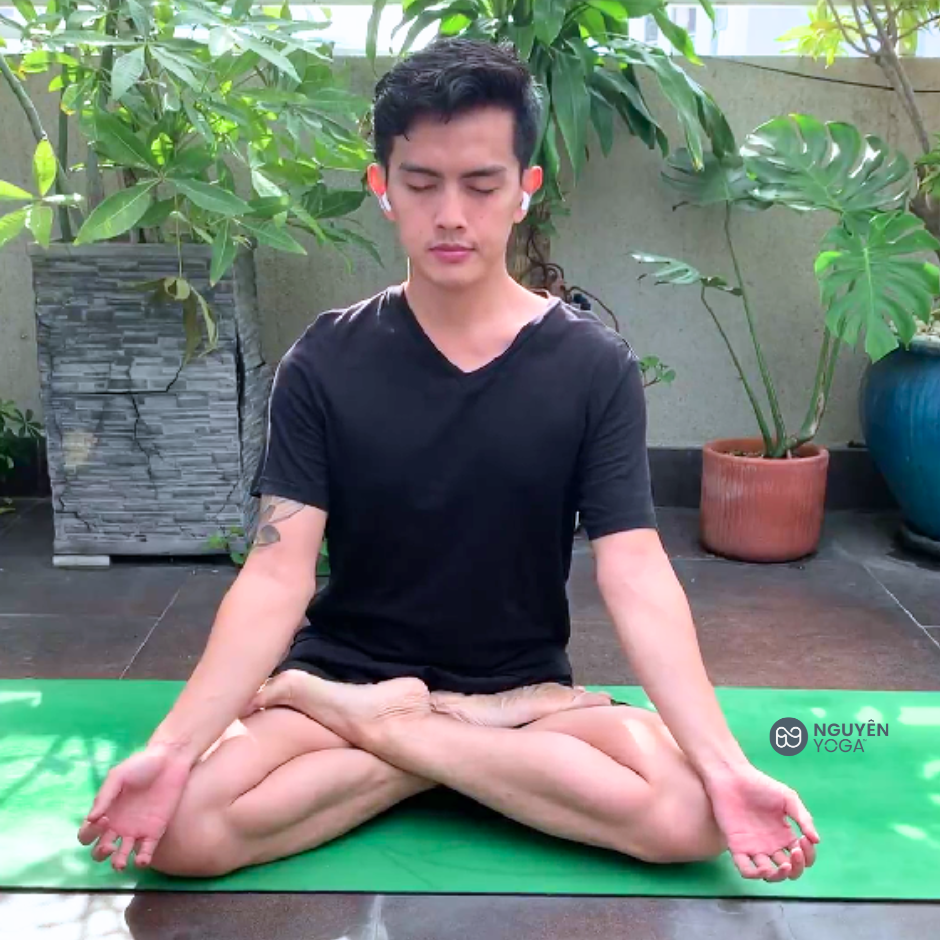
The Full Lotus meditation position, is the most difficult position for beginners, in which each leg rests on the thigh of the other leg. This pose is very stable and symmetrical, it is very beneficial in mind-body alignment, but requires great flexibility in the lower body.
Note: Don't try to do the Lotus pose if you have knee or hip problems. Yoga poses that help open the hips can help you do this pose easily.
Burmese Pose – Burmese style meditation
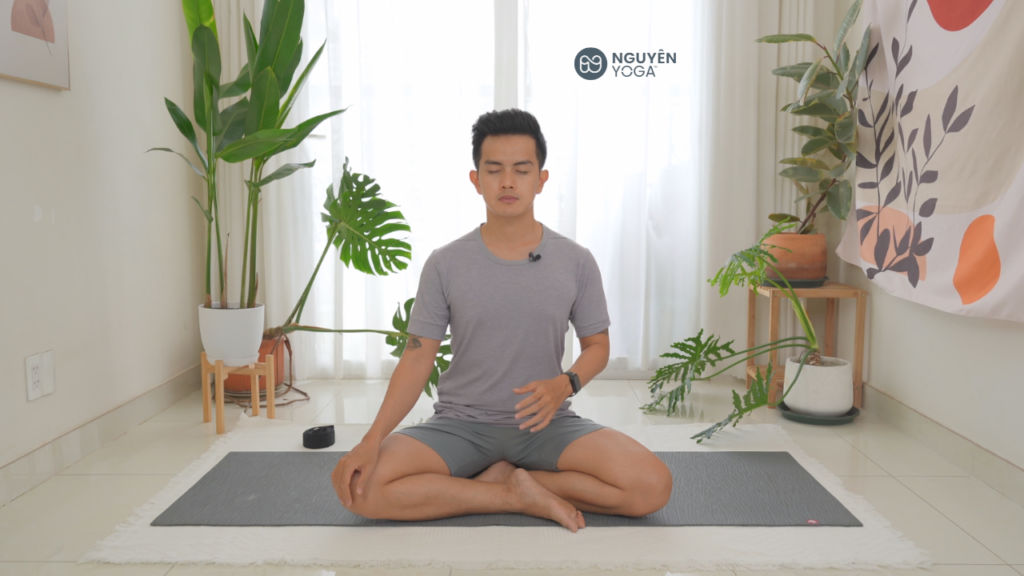
Burmese position means both feet are placed on the ground. This is a simple and comfortable pose if you are flexible enough so that your knees naturally rest on the ground.
Chair Meditation – Meditate in a chair
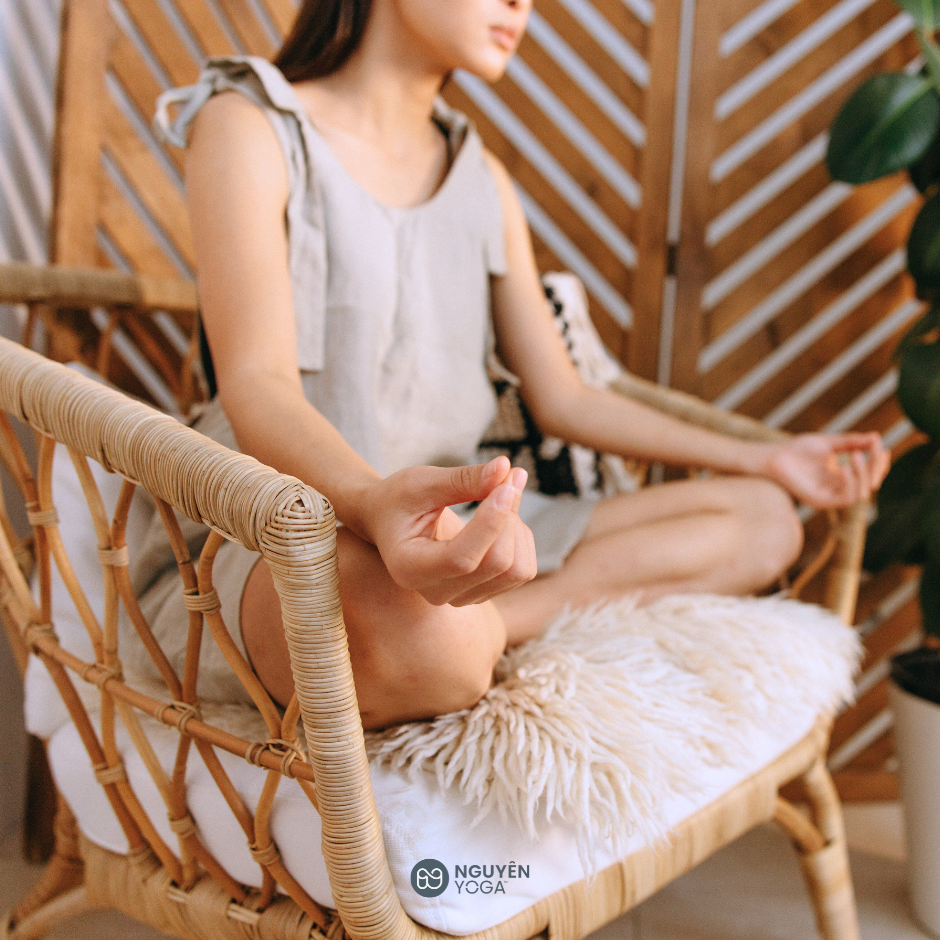
Chair Meditation offers all the benefits of sitting meditation.
Place your feet on the ground just wide enough apart, and your feet lie perpendicular to the ground. Sit close to the edge of the chair to stay upright. You can lean back against the chair back if needed, but try to maintain correct sitting posture. Use a pillow or cushion to straighten the chair's back.
Note: If possible, find a separate chair just to meditate, this will create a familiar environment every time you meditate, it is a way for the mind to understand the habit that "this is where I meditate".
Seiza Pose – Japanese style meditation
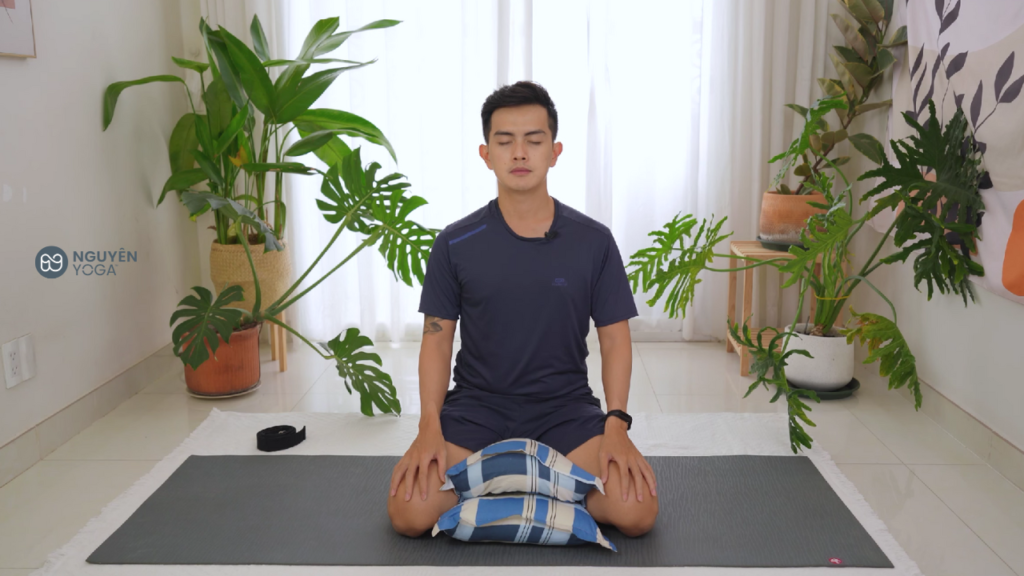
According to the Japanese tradition “Seiza,” which means “sitting properly,” this technique will have you sitting on a pillow or Yoga block, you can also sit barefoot. Simply put, you will put your feet on top of each other, the top of your feet in flat contact with the ground.
The Seiza kneeling position helps reduce pressure on the joints of the lower body and helps the back naturally straighten. A little padding under the knees and feet will help beginners a lot.
Standing Meditation Pose – Standing meditation
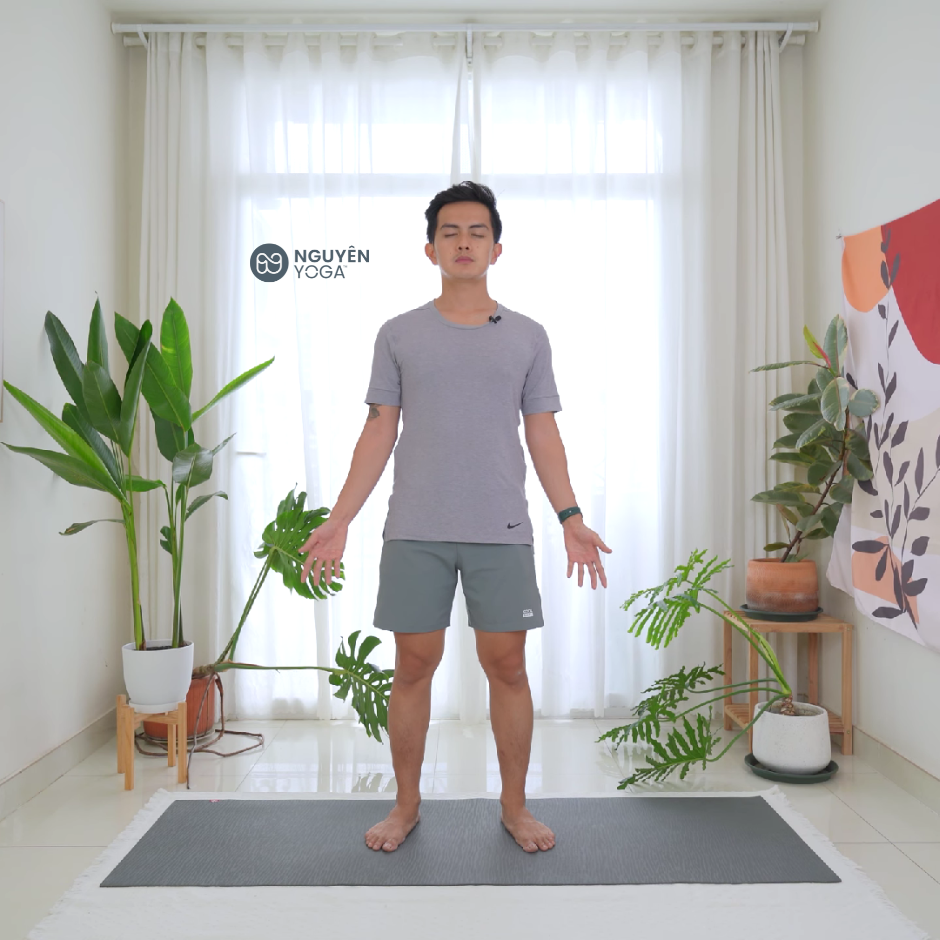
Standing Meditation position is a useful choice and is just as effective as other meditation positions, especially when meditation often ends in drowsiness or if sitting for a long time will cause numbness in the legs. All the meditation techniques that you do while sitting, you can also do while standing.
Lying Down Meditation – Lying Down Meditation

Lying Down Meditation is a viable option if sitting or staying upright for long periods of meditation causes some minor discomfort for you. To meditate this way, lie face down on your back in the same position Corpse pose (Corpse Pose) in Yoga, with the hands lying beside the body and the palms facing up. Try to keep your body quiet but still alert and alert, then meditate.
Notes when meditating
Breathe naturally: Don't try to control your breathing too much. Breathe naturally, and focus on its natural circulation.
Pay attention to the present: Meditation is about focusing on the present. Try not to get sidetracked by thinking about the future or the past.
Spiritual Discovery: Open your heart and accept everything that arises in your mind, whether conscious or unconscious. Observe them without judgment or judgment.
Meditate regularly: Practice meditation regularly to create habits and improve focus and attitude in daily life.
Learn from the instructor: If possible, learn from a meditation instructor or take meditation courses for in-depth support and guidance.
Create a quiet environment: Choose a place that is quiet and free of distractions to meditate. Turn off your cell phone and make sure you are not interrupted during your meditation.
Enjoy the process: The meditation journey is an opportunity to understand yourself and experience silence. Enjoy every moment of it and don't force yourself to achieve something specific.
Nguyen hopes that the above sharing will be effective and useful for your Meditation process. Besides, there are also many articles about health, Yoga and Meditation at Nguyen's blog, especially the channel Nguyen's Youtube There are many other useful exercises and movements, please follow and look forward to Nguyen!

